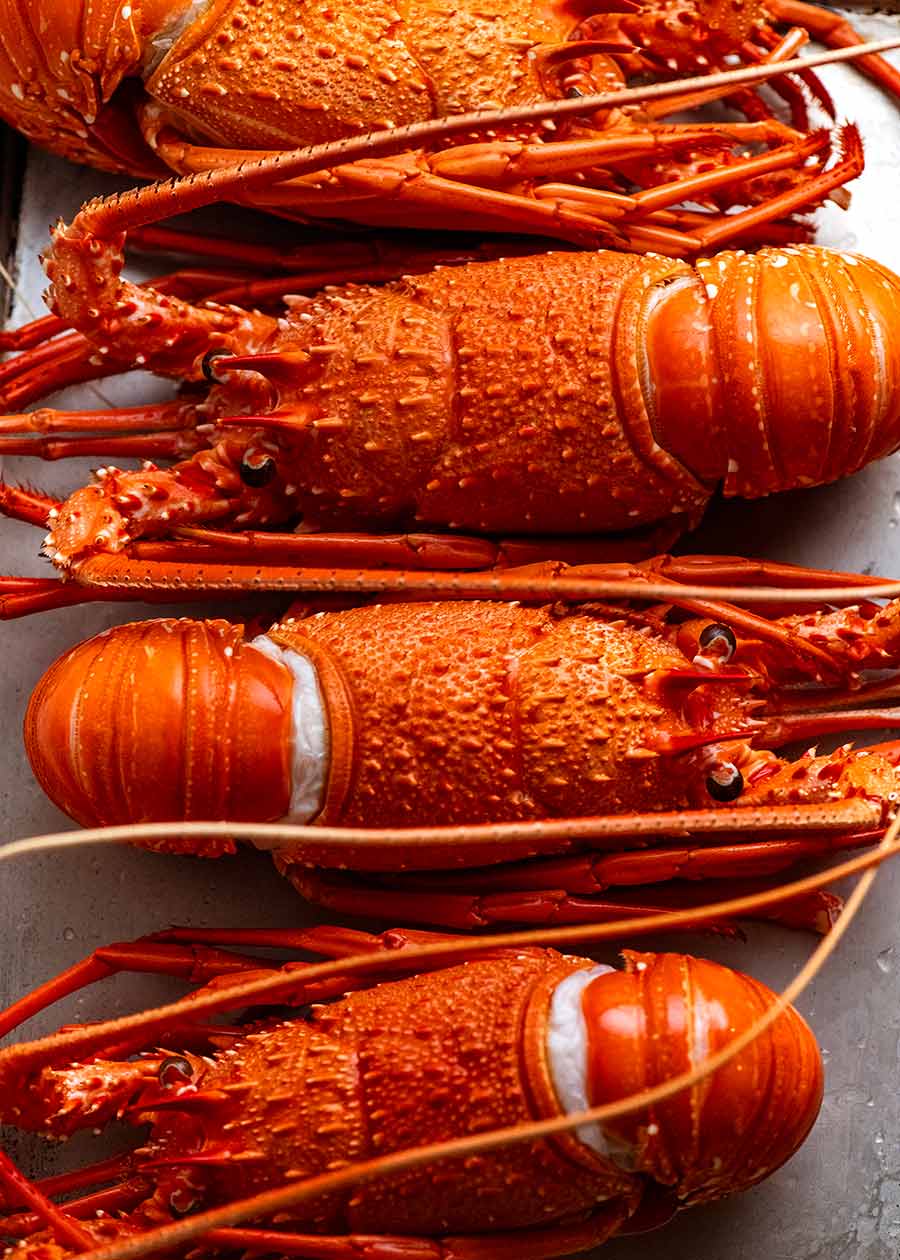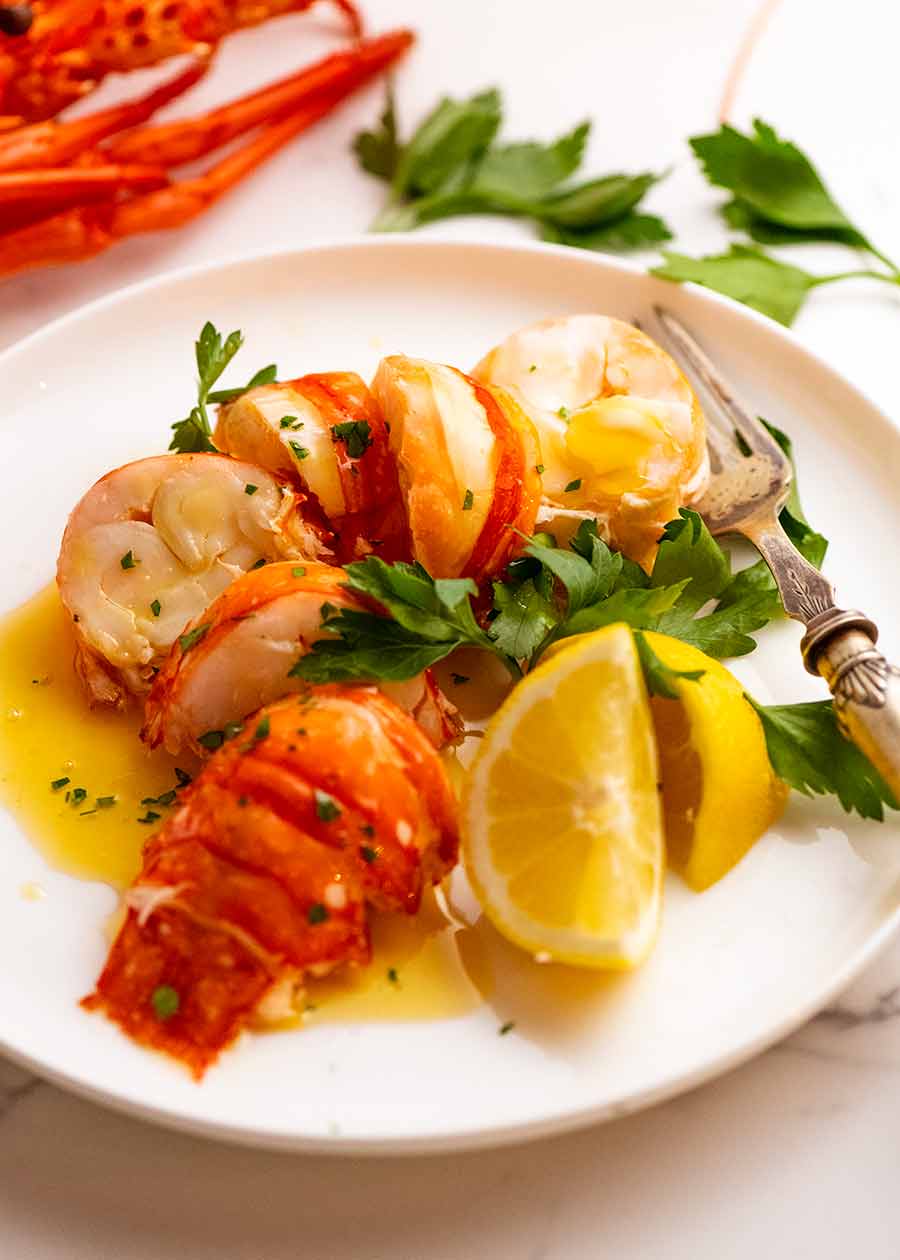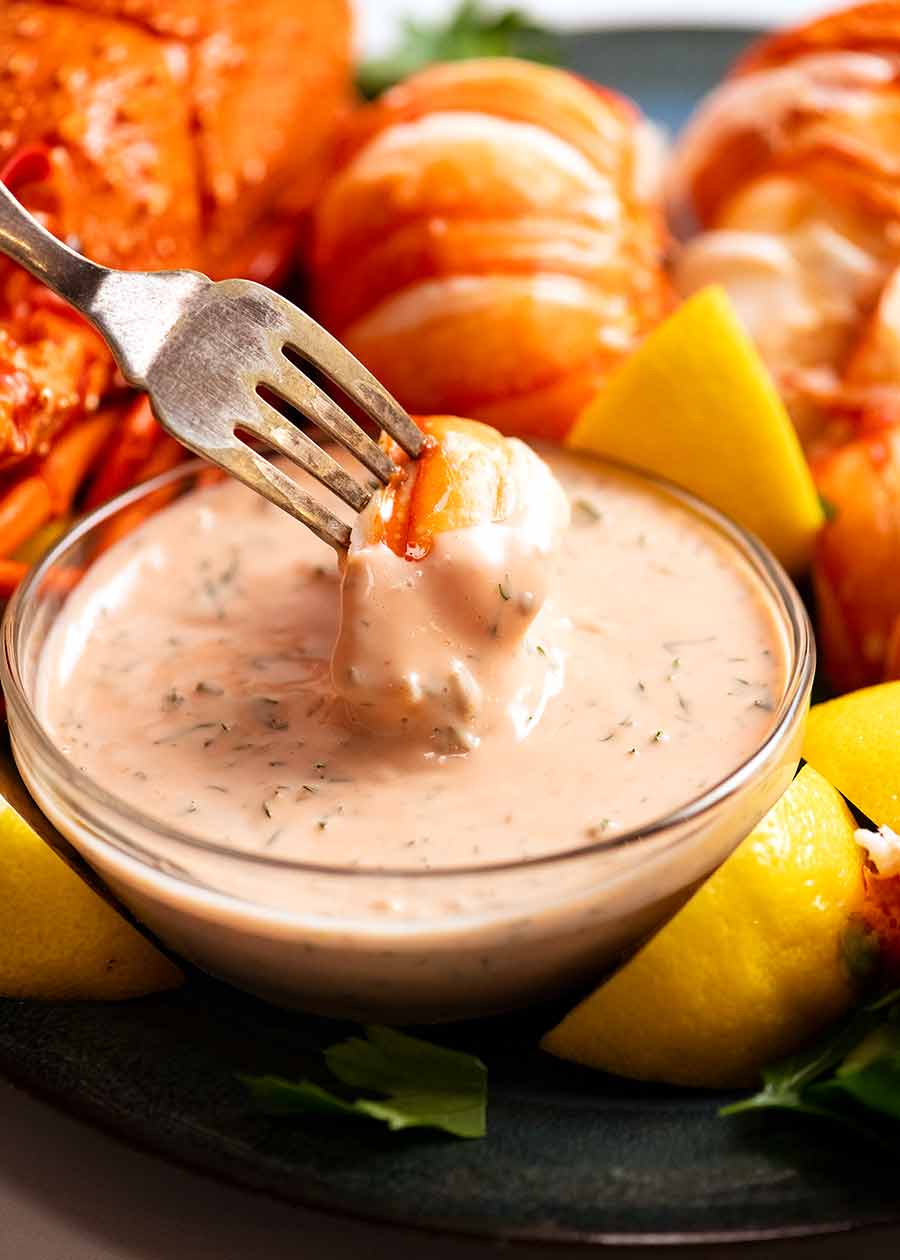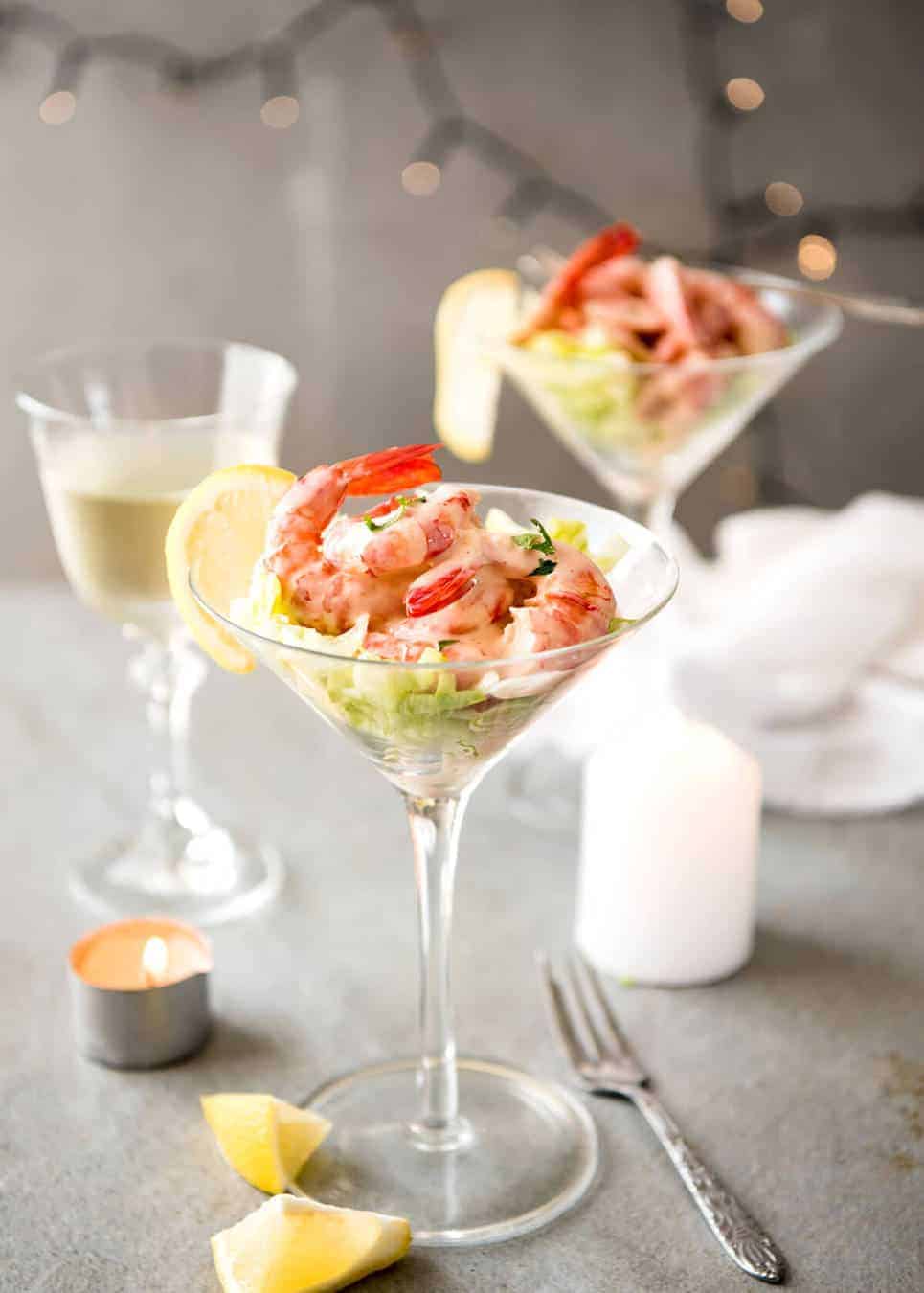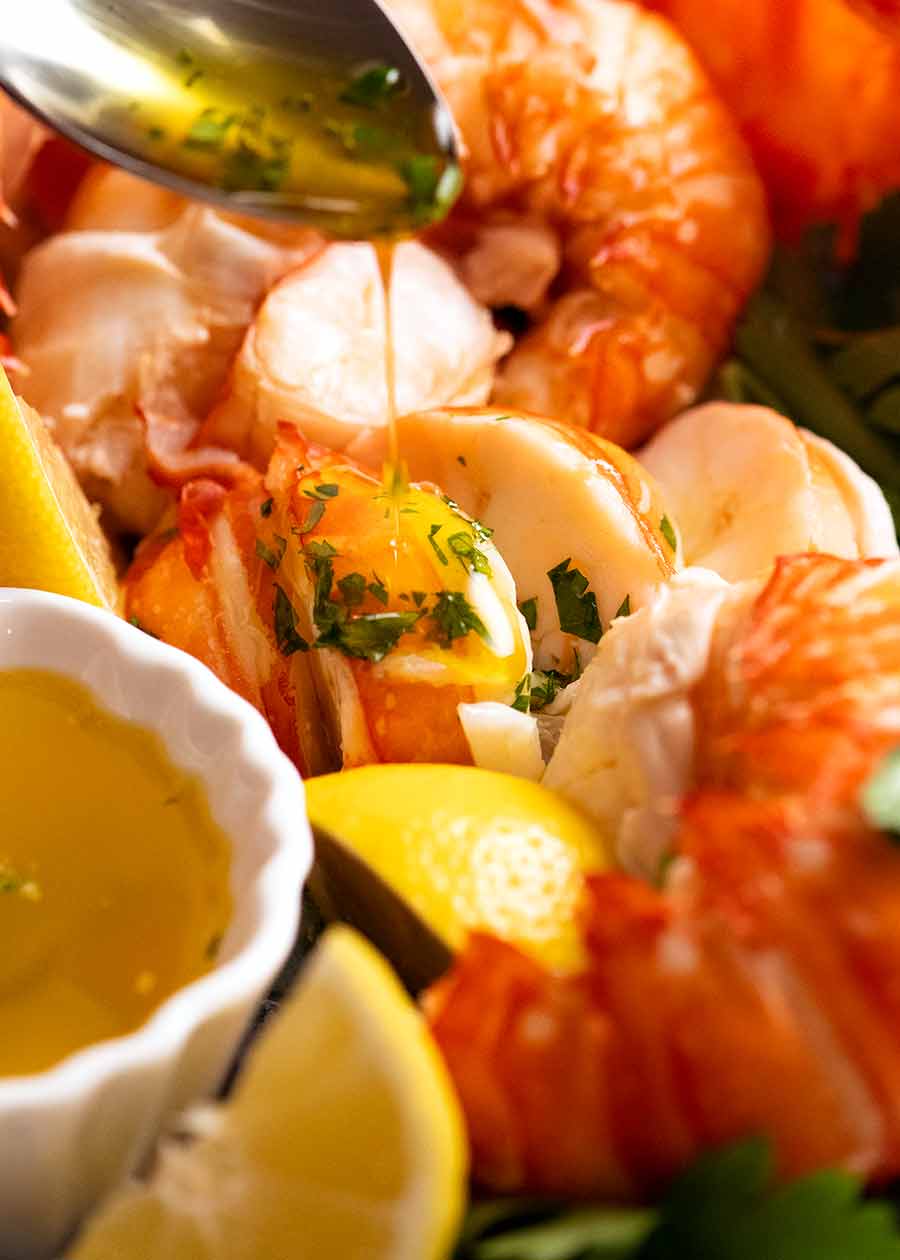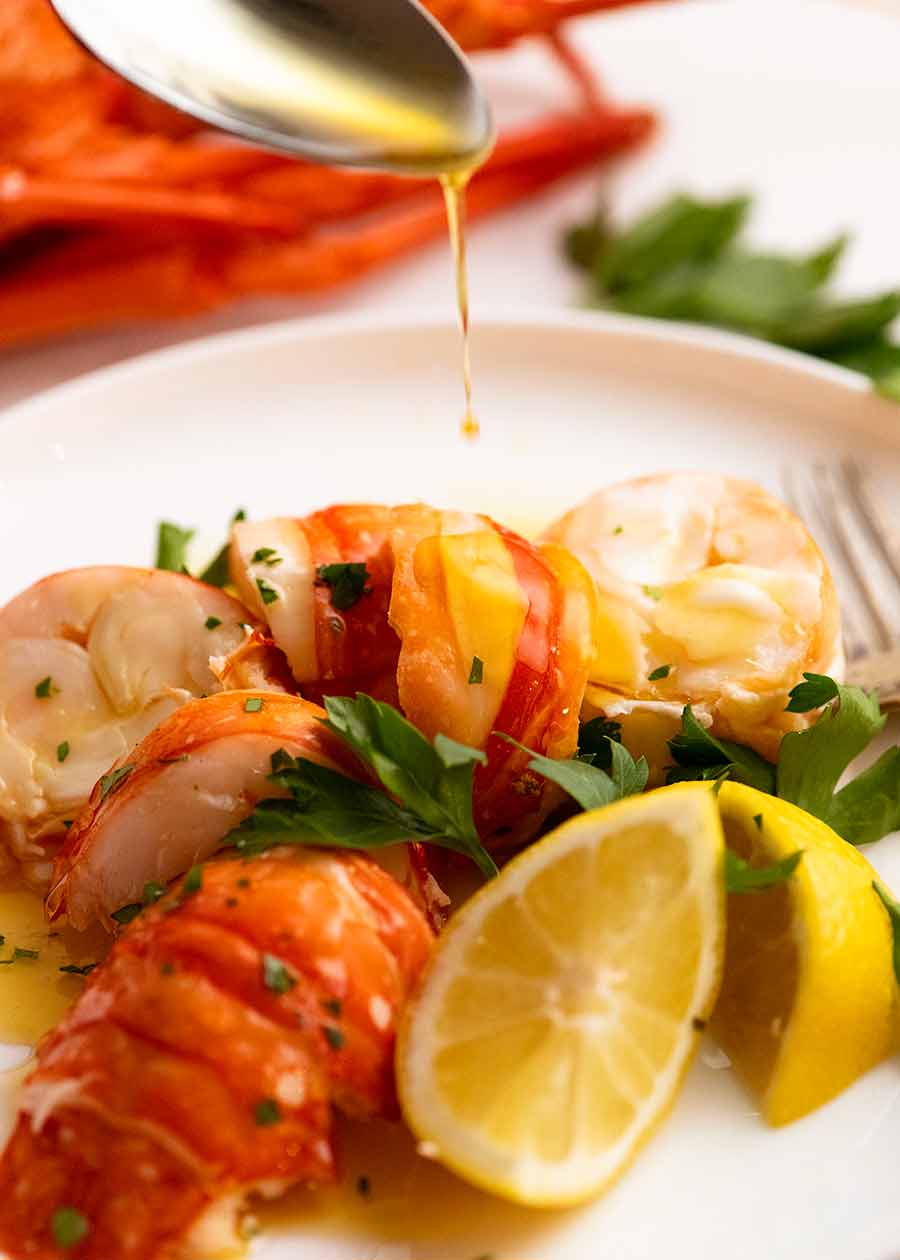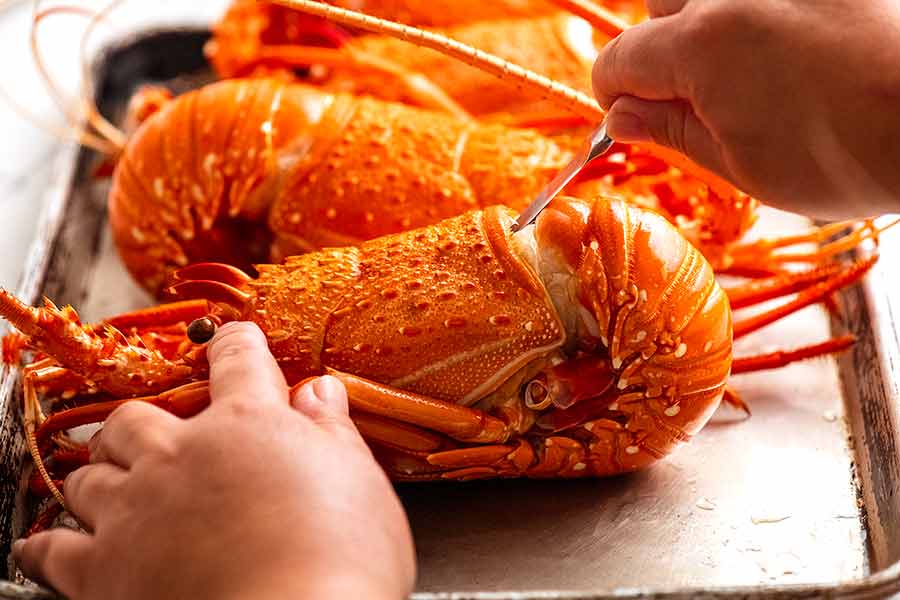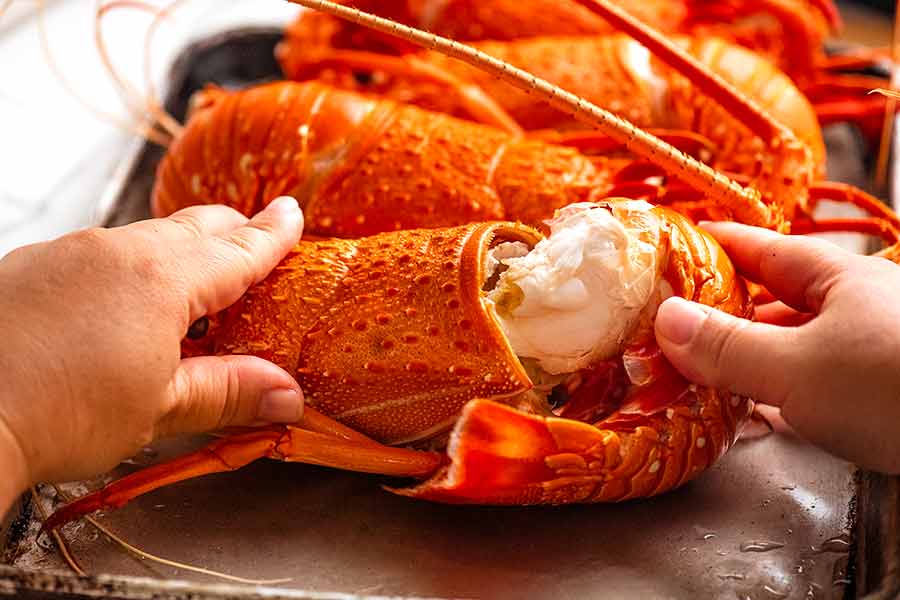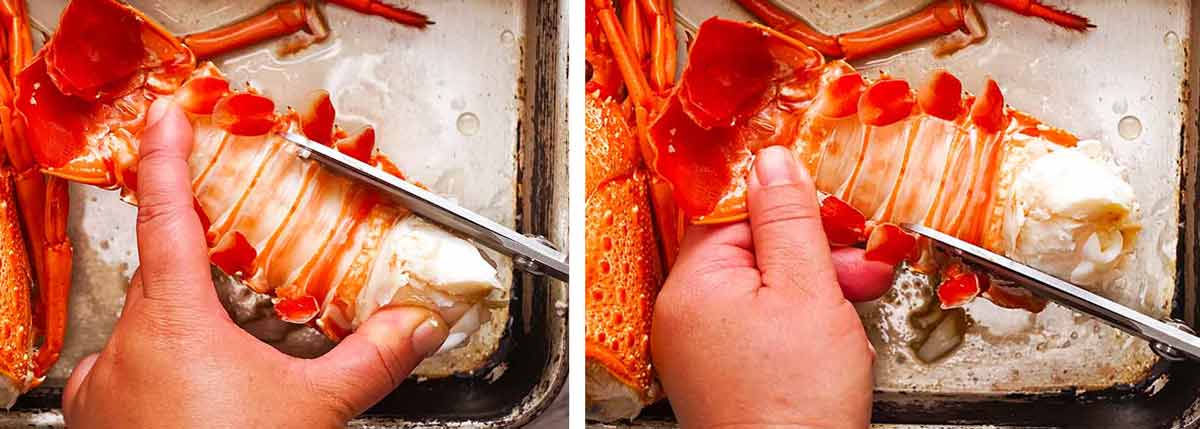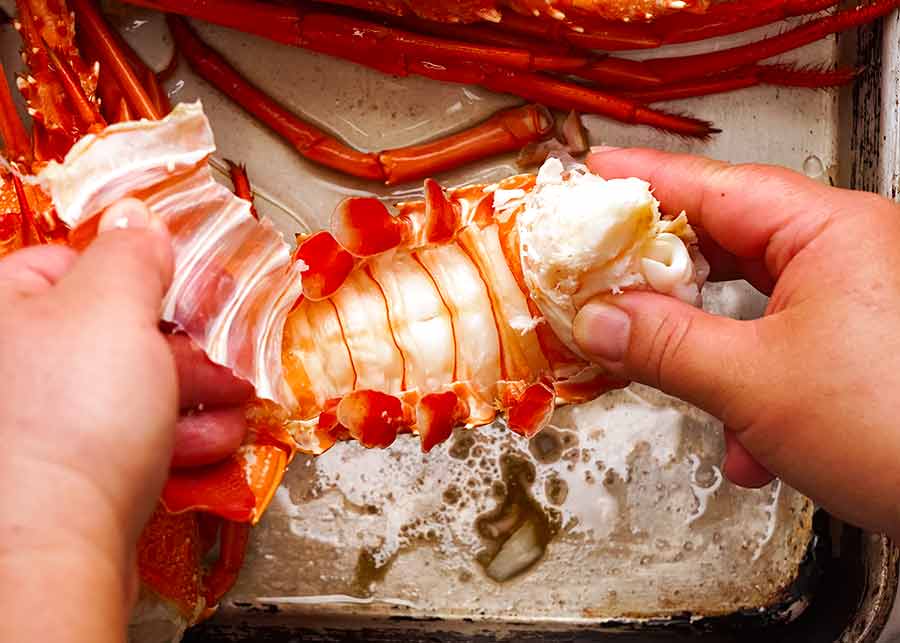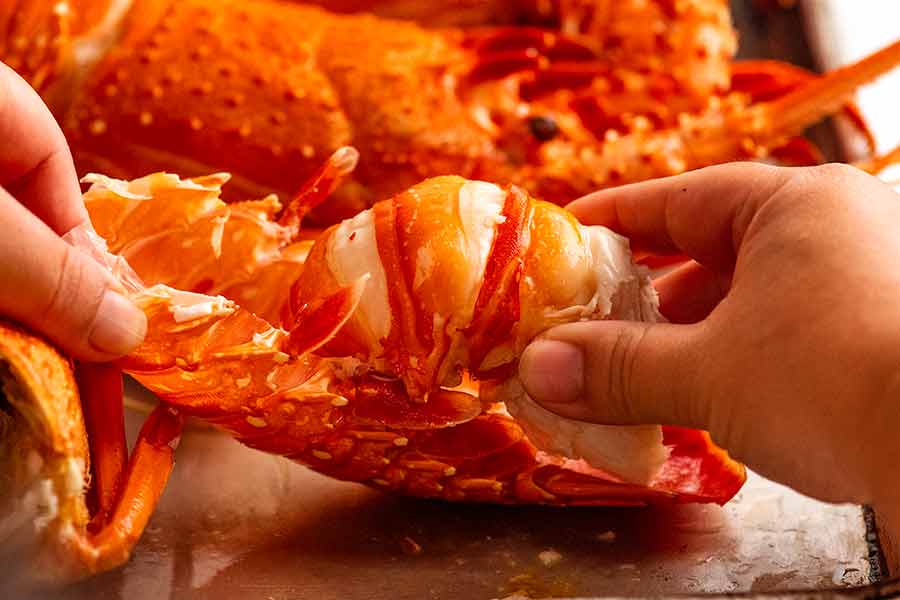Lobster Recipes
Rounding off a crazy year, Australian grocery stores have been selling lobsters at steeply discounted prices in the weeks leading up to Christmas due to trade tensions with China. (Read more below.) If you’ve been lucky enough to pick one up, here are 6 Lobster recipes that really make the most of them. All easy – and you’re likely to have everything to make at least one of these, if not two or three! Note: This post specifically contains dishes using cooked lobsters and crayfish, not raw, because the discounted lobsters that spurred this post came cooked. There’s a broader variety of preparation options for raw lobster which are not covered in this post.
What to make with cooked lobster
My biggest advice for making a dish with pre-cooked lobster is to keep it simple, and do not cook it which will risk drying it out. That’s like cooking a cooked steak – you just don’t! Store bought pre-cooked lobster does not have the same full flavour as a freshly cooked raw one, so it’s best to preserve the flavour it does have by keeping it simple. Let the lobster meat take centre stage! Note: you cannot make cooked lobster dishes such as Lobster Mornay and Lobster Bisque with a lobster already cooked. You need raw lobster. Let’s save these for another time!
6 Lobster Recipes using cooked lobster
Here are the lobster recipes I’m sharing today:
1. Seafood Sauces (4 types)
Serving lobster alongside seafood sauces is a classic summer way of serving lobster that let’s the beautiful lobster flavour take centre stage. Think – giant seafood platters served at restaurants! Almost any seafood sauce you would ordinarily serve with seafood will work well with lobster. Here are 3 classics plus our family favourite that I use as Prawn Dipping Sauces (ie alongside giant buckets of cooked prawns!): You can buy all these sauces at the grocery store. But they pale in comparison to freshly made!
2. Lobster Cocktail
If you’re thinking hey, that’s prawns in the photo not lobster!, you’re right! The photo below is Prawn Cocktails and lobster makes an outright perfect switch for the prawns in the recipe. This is a good, easy idea for elegant, individual starters. My biggest advice: keep it simple. Don’t cook it – you risk drying it out. And don’t overwhelm the lobster with other flavours!
3. Lobster with herb & garlic butter
A good easy one you just can’t go wrong with! Melted butter, garlic, lemon and a good hit of fresh parsley. To serve: Drizzle generously over sliced lobster, and also serve in a small bowl so everyone can help themselves (or dunk!). For individual plates, serve it like the Lemon Browned Butter Lobster pictured below. TIP: Make sure to provide crusty bread. All the lobster juices and butter makes for a very good bread-plate-mopping situation!
4. Lemon Browned Butter Sauce for Lobster
Called Beurre noisette in French, this is a brilliant luxurious sauce for all types of seafood and is a very popular sauce recipe used for fish. The reason it’s so good is because it’s not just melted butter with lemon, it’s browned butter which has a much more intense, nutty flavour than plain melted butter. Plus, the intense golden yellow colour is stunning! And to think this is just made with two ingredients – butter and lemon! (It’s all in the method) How to serve it: As above with garlic butter, drizzle and also provide extra for each person to spoon over as much as they want. TIP: This is a good one to use if you want to plate up individual start-size plates, such as pictured at the top of the post. It looks elegant because the butter is a more intense yellow colour than just normal melted butter, and as mentioned above it’s a bit fancy pants Frenchy.
5. Salsa Verde
A green sauce made with finely minced fresh herbs mixed with olive oil and a little garlic, this is spectacular with most seafoods, from cooked fish to grilled prawns, and most certainly for lobster. How to serve it: Platter style for sharing, with a bowl of Salsa Verde for people to help themselves. Or the lobster sliced into bite size pieces with Salsa Verde drizzled over it, served as individual starters – as pictured above.
6. Lobster Rolls
Hailing from New England in the States, lobster rolls have achieved somewhat of a cult status in NYC. Luxurious yet relatable, though often comes with a hefty price tag, these are surely the most luxurious sandwich in the world…though I use the word “sandwich” loosely!! Comprised of shredded or chopped lobster in a mayonnaise based sauce stuffed inside soft rolls, there’s just one important rule: don’t skimp on the lobster. The whole point of a lobster roll is for the filling to be abundant and overflowing. Every bite should be mostly lobster with bread just taking a supporting role. Not the other way round! So don’t make lobster rolls if you don’t have enough lobster! TIP: 1 average size discounted whole lobster currently selling at Woolworths/Coles (~500-600g whole) is enough to generously stuff just over 2 mini brioche bun rolls, as pictured above, or 3 mini brioche rolls (ie round).
No lobster mornay? No Lobster pasta??
There are some great classic lobster recipes that can only be made with raw lobster. So in this section, I cover off on why they are not suitable to make with pre-cooked lobster. As mentioned above, the lobster flavour, tenderness of juiciness of the meat is not as good with pre-cooked lobsters compared to freshly cooked raw lobsters. In addition, not starting with raw lobster means you lose the ability to make dishes that require a lengthy cook time, the extra flavour you get from the shell or even the flavour you get in sauces from searing the raw lobster meat, such as when we make things like Creamy Garlic Prawns. This limits the uses of pre-cooked lobster compared to raw lobster which can be used for a much wider variety of such as pastas, lobster bisque and Lobster Mornay, to name a few. If you just tossed lobster meat into pasta or a soup, you would only get lobster flavour when you bit into a piece of meat – and it’s dispersed throughout. So to make a really good, say, lobster pasta, you really need the lobster flavour in the sauce to coat the pasta, and to achieve this you need to start with raw lobster.
How to remove shell / meat of lobster (crayfish)
Around 95% of the meat in lobster is in the tail, so that’s all we need to remove. It’s not difficult to do with cooked lobster here’s how:
- Insert knife between head and tail – insert a small knife in the gap between the shell where the tail and head meat on a 45 degree angle, almost scraping the inside of the shell of the head; 2 Cut through the flesh along the top and side of the lobster (no need to cut all the way around);
- Twist off tail – then give the tail a twist and it will separate from the head. A good chunk of the meat from inside the head should be attached. If the meat has yellow and black bits on it from inside the head, just scrape or cut it off. The yellow stuff is called tomalley – or “mustard” – as has intense lobster flavour…. but it’s an acquired taste. I don’t eat it!
- Cut underside with scissors – flip the tail upside down so the soft shell is facing up. Then cut down either side so you can peel it back a bit like opening a can of sardines!
- Loosen meat – just use your hands to loosen the lobster meat from the shell. It comes out easily and neatly;
- Remove poop vein – if you see a poop vein (black “string” down the back of the lobster tail meat), then carefully pull it out. If you stretch the meat out straight, you should be able to pull it out in one go. If it breaks, just cut an incision halfway down the lobster tail then use a toothpick to help remove it. Otherwise, pick it out when you slice it. (Sometimes poop vein is thick, sometimes barely there!)
- Lobster meat removed! And voila! Lobster tail meat remove from the shell in one neat piece! Looks like a giant prawn, no? 🙂
- Serve whole or cut – you can either serve the lobster meat in one piece and let people cut it themselves into bite size pieces. Or you can cut it up into chunks – up to you, and depends how much lobster there is to go around. Scroll up to see photos of individual plates where I sliced the lobster meat, and the platter where I kept most of the pieces whole. Tip: Keep at least one lobster head. It makes for great presentation on a platter! Lobsters have big claws whereas crayfish do not, but other than that they are basically the same thing. They taste the same, and the preparation for cooking is the same. In Australia, we only have crayfish. But everyone calls them lobsters – even in the stores, and even for exporting purposes!
How to warm cooked lobster
Though I do not recommend cooking cooked lobster, you can warm it up slightly if you wish. The best method is to steam using a stove steamer, just for a few minutes until the lobster meat is warmed through. Don’t risk a microwave steamer – too easy to cook the lobster! And there you have it. Some quick last-minute recipes for fellow Aussies who have been lucky enough to score some of the discount lobsters this Christmas. An impromptu post I decided to share after learning at 11 am today that I’ll be in lockdown over Christmas Day – so I decided to use the lobsters I got for Christmas Day Lunch to do this post instead! So millions of dollars of lobsters which were destined for the export market have made their way to mainstream Australian grocery stores (Woolworths and Coles). They are being sold at heavily discounted prices of ~$20 each, making them far more accessible for everyday Aussies compared to the usual hefty price tags, upwards of $100 each! These discounted lobsters are sold cooked and frozen, so the recipes contained in this post is specifically for cooked lobster. I know I say these are “quick and easy”, but I did manage to make a frightful mess photographing these recipes…. The clean up was long and painful!!! 😂 – Nagi x
Watch how to make it
Life of Dozer
The last minute cancellation of Christmas parties and extended stay by family during this Christmas period means that both Dozer and I have been doing a lot of THIS over the past week!!
